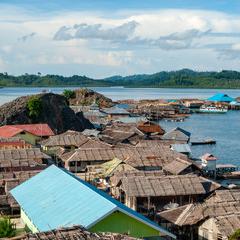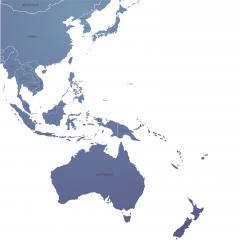Today, the Asia Pacific Centre for the Responsibility to Protect together with the Global Centre for the Responsibility to Protect have issued a new publication: A Framework for Action for the Responsibility to Protect: A Resource for States.
The responsibility to protect principle, as endorsed by States, is described in just two paragraphs of the General Assembly's 2005 World Summit Outcome resolution. In that resolution, it was agreed that each State has the responsibility to protect its population from genocide, war crimes, ethnic cleansing and crimes against humanity. It was also agreed that the international community should encourage and help States to exercise that responsibility; and that the international community has a responsibility to use appropriate humanitarian, diplomatic and other peaceful means to help protect populations from atrocity crimes.
Since 2005 the responsibility to protect principle has been elaborated in annual reports of the Secretary-General, and in academic literature and resources developed by civil society organisations. Some States and regional organisations have also developed their own guidelines and toolkits, applicable to their own contexts. However, thus far there has been no single, generally applicable and readily accessible resource for States that sets out in one place what practical actions governments should be expected to undertake to honour their responsibility to protect.
The Framework for Action seeks to address that gap. It is inspired by the fact that in recent years, in the General Assembly's annual debates on the responsibility to protect, many States have expressed their interest in focusing the debate about the responsibility to protect on the matter of implementation, or 'operationalisation'. In other words, on what States can actually do, domestically and in their foreign policy, and individually and in cooperation with each other, to more effectively protect populations from atrocity crimes wherever they occur.
The Framework for Action sets out a series of actions that States should take to prevent and respond to atrocity crimes, across four spheres of action:
- domestic laws, policies and institutions;
- bilateral cooperation and influencing;
- regional cooperation; and
- multilateral cooperation.
The Framework for Action is written for all States, not just States that have a history of atrocity crimes or that consider themselves to be at high risk of atrocity crimes. It reflects that the risk factors of atrocity crimes - such as inequality, discrimination, marginalisation, xenophobia and identity-based violence - are present in all societies, albeit to varying degrees; and that similarly, all States have capacities, institutions and actors that serve as inhibitors to atrocity crimes. Regardless of precisely how a State measures up against an atrocity risk analysis, addressing these risk factors and strengthening the inhibitors to atrocity crimes will promote less violent and more stable, harmonious and productive societies.
You can read the report here (PDF, 2.2MB), or from our APR2P Reports page, along with other reports on atrocity prevention by the Centre and its partners.


